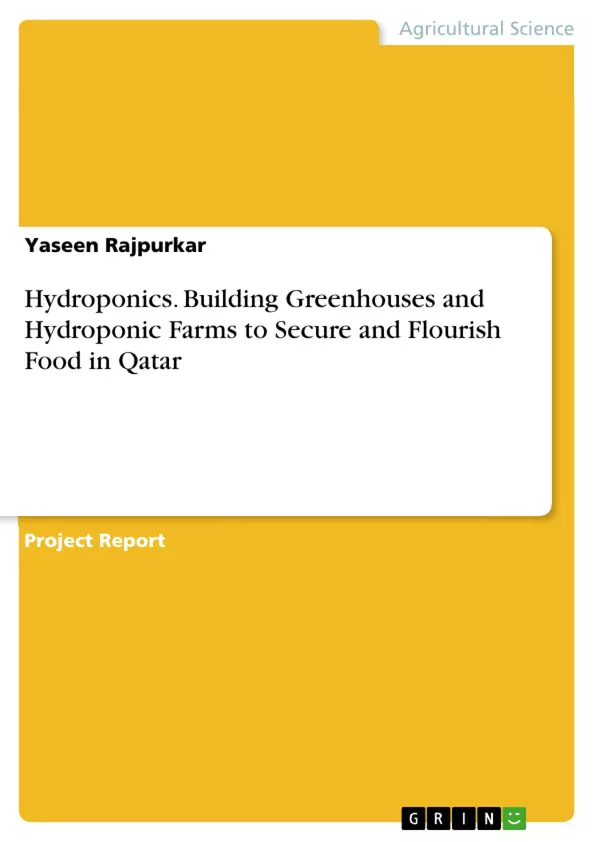In a closed hydroponic farms like hydroponics carried out in greenhouses, very little and insignificant research has been done on maintaining the individual nutrient balance in a complete water nutrient solution and how maintaining the nutrients would result in less usage of water and the nutrients composition, to give high yields of production of plants and vegetables. Research in this area would give high outputs with comparatively very less inputs saving adequate quantity of water, nutrients and minerals.
In any Hydroponic system the water used should always be purified and when nutrients are re-circulated in a hydroponics system, each nutrient must be maintained at the desired concentration and it will keep changing as the plants absorb nutrients and as water is reduced from the solution through evaporation and transpiration. It is difficult to predict the changes that take place in the nutrient solution as it is difficult to measure transpiration rates and uptake of each nutrient by the plant as it grows and develops gradually.
The desired concentration of the solution can be obtained and maintained by continuously leaking of the solution from the re-circulating system and thus the solution is refilled again with the desired concentration of nutrients, which can be changed at certain time intervals as the plant develops and goes through different phases of growth. Similarly, there are different factors that affect the plant growth and the water nutrient solutions when the process of hydroponics is carried out in a greenhouse, like Oxygen level, mixing of nutrients, water purification, Formulations, Desirable pH range, monitoring etc.
Hydroponic Greenhouses are introduced with extraordinary technical innovations that have led to improvements of greenhouses features such as improved ventilation, greater strength and more resistant, more luminosity, larger air volume, no condensation, etc. Its robust modular design allows supporting different types of crops and additional elements such as thermal screens, irrigation pipes, etc. The greenhouse structure is composed of tubular parts assembly, prefabricated, seamless and made with premium materials, allowing easy and quick assembly. In addition to the structure itself, the greenhouse has a series of hard points that enable its complete immobility.
Frequently asked questions
What is the abstract about?
The abstract discusses the need for research on maintaining nutrient balance in closed hydroponic farms, particularly in greenhouses. It emphasizes the potential for reduced water and nutrient usage while achieving high yields of plants and vegetables. Key aspects include water purification, nutrient concentration management, and factors like oxygen levels and pH range.
What is the table of contents about?
The table of contents provides a structured overview of the document. It lists the key sections, including the abstract, acknowledgements, list of figures and diagrams, list of tables, introduction (covering food security, agriculture & water in Qatar, Qatar area, population, hydroponics, and protected agriculture), hypothesis, aim & objectives, literature review (general review, history, indoor experiments, problems, types, conclusion), methodology, program of work, conclusion & expected results, references, and appendices (including a questionnaire).
Who is the author acknowledging?
The author expresses gratitude to Almighty ALLAH, parents, and wife for their support. They also thank Dr. S. K. WERAGODA and Mr. GEETH JAYATHILAKE for their guidance and knowledge, as well as Mr. Juan Carlos Santiago from OASIS AGROTECHNOLOGY S.L. for providing information and encouragement. Gratitude is also extended to Sheffield Hallam University and ICBT.
What figures and diagrams are listed?
The list includes figures illustrating yield comparisons between greenhouse and open field crops in Qatar, Gantt chart for hydroponic greenhouse development, and diagrams illustrating different hydroponic systems (Ebb and Flow, Nutrient Film, Aeroponics, Water Culture, Wick System, Drip System), and components of the greenhouse.
What tables are included?
The list presents tables showing monthly production, consumption, and deficits of various crops in Qatar (tomato, cucumber, sweet pepper, eggplant, lettuce, green beans, strawberry, musk melon), as well as land and water productivity under different production systems, and cost-benefit analyses for strawberry and musk melon production and green fodder production in hydroponic and open field systems and greenhouse cover materials and a data sheet for the greenhouse
What is the "Introduction" section about?
This section covers background information such as food security in Qatar, agriculture and water issues in Qatar, Qatar's geographical area, Qatar's population, the proposed solution of hydroponics, and the importance of protected agriculture.
What is the section "Importance of Protected Agriculture" about?
This section defines protected agriculture (PA) and highlights its potential to improve crop yields, reduce water and chemical usage, extend growing seasons, and utilize marginal lands. It also discusses the economic and social benefits of PA for rural communities in Qatar.
What is the methodology section about?
This section describes the methods used for data collection and analysis in the research. It mentions data collection from various sources, including government departments, progressive PA farms in Qatar, and ICARDA's research, including the cost-benefit analysis
What key points are made in the "literature review"?
The literature review explores previous research and knowledge on hydroponic greenhouses. Topics include the advantages of hydroponics, the history of hydroponics, methods for indoor hydroponics, and a general review about hydroponic greenhouses.
What is the aim and objectives of the paper?
The aim is to promote hydroponics as a viable and sustainable agricultural practice in Qatar to enhance food security, increase crop production, and conserve water resources. The objectives include testing hydroponic systems, ensuring greenhouse resistance, understanding the advantages and disadvantages, examining plant growth, building greenhouses, conducting cost-benefit analyses, managing production, and ensuring high-quality produce.
- Arbeit zitieren
- Yaseen Rajpurkar (Autor:in), 2016, Hydroponics. Building Greenhouses and Hydroponic Farms to Secure and Flourish Food in Qatar, München, GRIN Verlag, https://www.grin.com/document/367403



